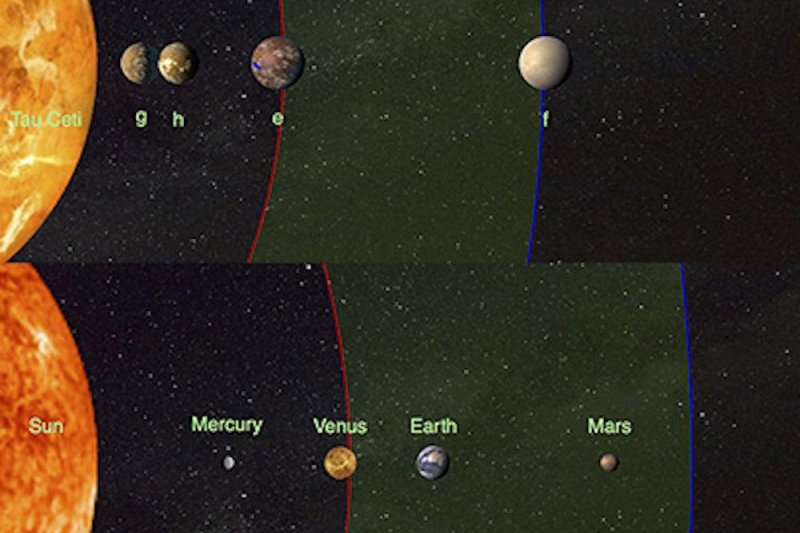The four newly discovered worlds and the closest Earth-like exoplanets yet discovered orbiting a nearby sun-like star. Photo by Fabo Feng/UCSC
Aug. 9 (UPI) -- Scientists have found four Earth-like exoplanets orbiting a star system just 12 light-years away.
The four planets are the closest Earth-like worlds yet discovered. And at just 1.7 Earth masses, they're also the smallest nearby Earth-like planets.
Astronomers detected the presence of the four exoplanets by analyzing slight wobbles in the movement of tau Ceti, the closest known sun-like star. Tau Ceti's wobbles are incredibly subtle, and required instruments capable of measuring deviations as small as 30 centimeters per second.
"We are now finally crossing a threshold where, through very sophisticated modeling of large combined data sets from multiple independent observers, we can disentangle the noise due to stellar surface activity from the very tiny signals generated by the gravitational tugs from Earth-sized orbiting planets," Steven Vogt, a professor of astronomy and astrophysics at the University of California, Santa Cruz, said in a news release.
With technology improving, scientists think they're close to detecting even more subtle deviations, which would allow astronomers to identify Earth analogs orbiting nearby.
Researchers believe the outer two or the four newly discovered worlds feature habitable conditions. However, a dense debris disk surrounding tau Ceti likely sees the four planets constantly bombarded by asteroids.
The latest analysis -- detailed this week in the online journal arXiv -- builds on previous efforts by the UCSC team to disentangle stellar surface activity from gravitational anomalies.
Improvements in the group's algorithm allowed astronomers to rule out two exoplanet candidates identified in 2013.
"But no matter how we look at the star, there seem to be at least four rocky planets orbiting it," said Mikko Tuomi, an astronomer at the University of Hertfordshire in England. "We are slowly learning to tell the difference between wobbles caused by planets and those caused by stellar active surface. This enabled us to essentially verify the existence of the two outer, potentially habitable planets in the system."















